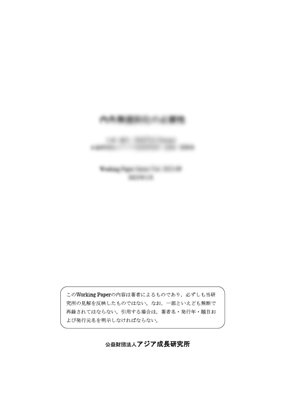Why Did Japan’s Steel Industry Contract So Much in the 1990s?

| 執筆者 | Oleksandr Movshuk, Eric D. Ramstetter, Hiro Lee |
|---|---|
| 発行年月 | 2003年 10月 |
| No. | 2003-27 |
| ダウンロード | 321KB |
内容紹介
Between 1990 and 1999, the value of steel shipments and value added measured in current prices fell 38 percent and 32 percent, respectively. A large portion of the decline can be accounted for by the 19 percent fall in steel prices during the period and real production thus fell much more slowly, but the number of employees also declined by 28 percent during the period. This study decomposes the growth of sales in several dimensions, first showing that declines in intermediate material costs and the operating surplus or profits accounted for the large portions of falling steel production in most years, but that falling labor costs have become more important in recent years. Second, declines in domestic demand components, both price and quantity, account for much larger proportions of the decline in steel production than do declines in exports. Third, declines in domestic sales of hot-rolled steel, cold-rolled steel, and crude steel, as well as declines in production of blast furnace products, rolled products, and steel materials were also relatively large compared to declines in other product categories.
